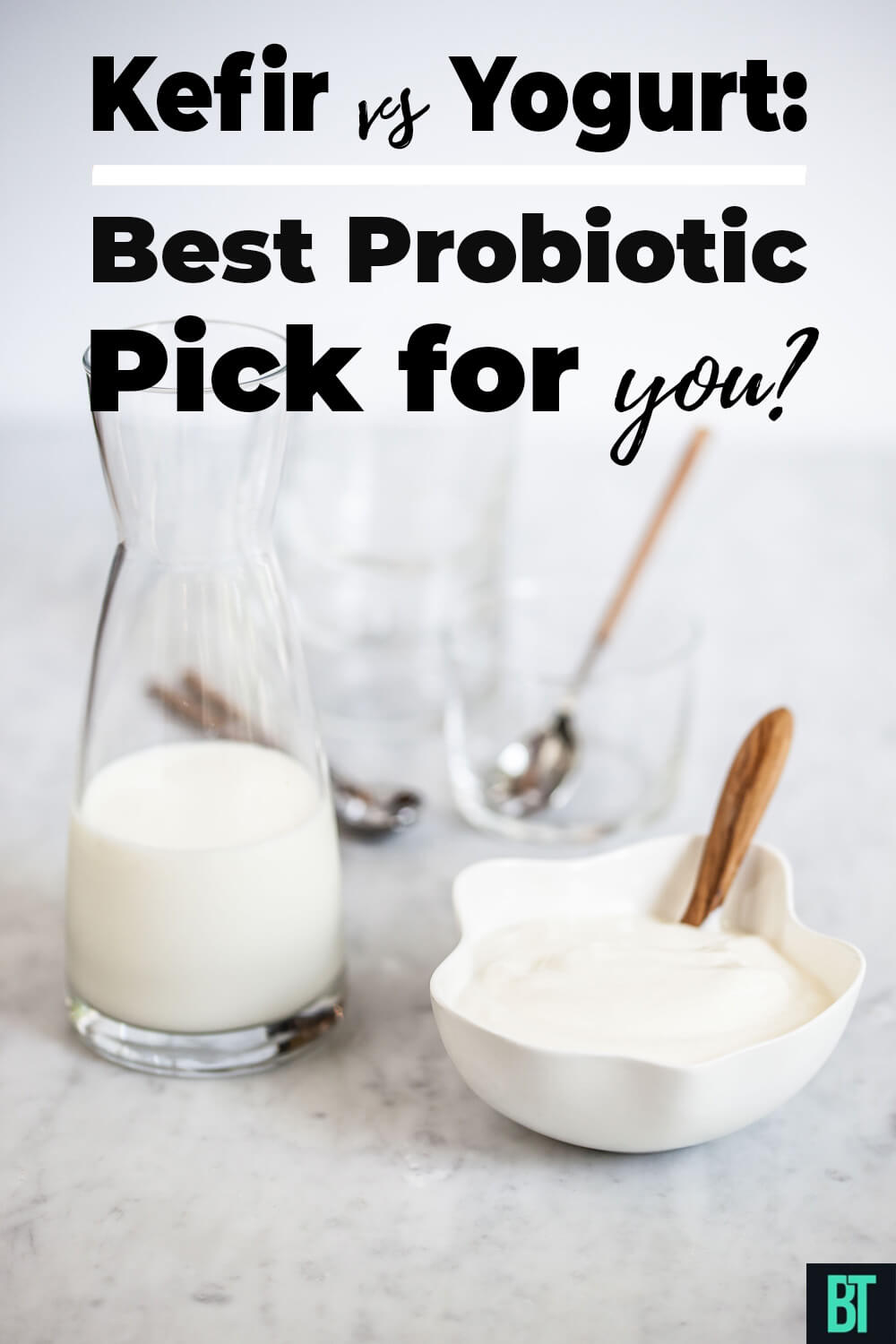Kefir vs. Yogurt: Which Probiotic Food Is Better for You?

I once swapped my usual Greek yogurt for plain kefir during a busy week. Same dairy aisle, new routine. My breakfast got quicker, and my stomach felt calm. Coincidence? Maybe. It made me compare both foods with fresh eyes.
Want a clear answer without lab talk? Let’s keep it simple.

Quick Take: The Key Differences
| Feature | Kefir | Yogurt |
|---|---|---|
| Live cultures | Mix of helpful bacteria and yeasts from kefir “grains” (a living starter) | Friendly starter bacteria; some brands add extra strains |
| Texture & taste | Drinkable, tangy, sometimes lightly fizzy | Spoonable; Greek yogurt is thick and creamy |
| Lactose | Often lower after longer fermentation; many find it easier to digest | Lower than milk, but varies by brand and style |
| Protein | Moderate | Greek yogurt usually has the most per serving |
| Best for | Variety of microbes, smoothies, pourable dressings | High‑protein bowls, dips, sauces |
Bottom line: Pick kefir for variety and easy sipping. Pick Greek yogurt when you want more protein in a bowl.
Probiotics & Strains (Plain‑English Version)
Kefir: many live cultures in one bottle
Kefir is made with a starter called kefir grains—a natural community of microbes. Because this community is mixed, kefir often carries a wider range of live cultures than standard yogurt. Early studies suggest support for gut balance and gentle immune benefits. Results differ by product and by person. Think of kefir as a helpful food, not a cure.
Yogurt: steady results from known starters
Yogurt is made with well‑known starter bacteria used again and again, so texture and taste stay steady. Many brands also add extra live cultures. Regular yogurt intake is linked with better diet quality in research. It’s a solid everyday choice.
Simple tip: Rotate fermented foods across the week. Variety on your plate can mean variety in your gut.
CFU, Explained (No Jargon)
CFU stands for colony‑forming units. It’s a way to count live microbes in a product.
- A bigger number is not always better. A steady habit of plain kefir or plain yogurt often beats chasing the highest label claim.
- Time, heat, and storage change CFU. Keep products cold and buy what you’ll finish soon.
- Focus on consistency (a serving most days) and variety (kefir and yogurt over a week).
Lactose & Tolerance
A small human trial reported that kefir improved lactose digestion and tolerance in people who don’t digest lactose well. That fits the idea that longer fermentation lowers lactose.
If milk bothers you:
- Start with ¼–½ cup of plain kefir or yogurt and see how you feel.
- Try Greek yogurt; straining often means less lactose per spoon.
- Keep it plain. Sweeten at home with fruit or a small drizzle of honey.
Nutrition Snapshot (Plain, Unsweetened)
Labels differ. Check your brand. Keep portions real.
Typical per 170–200 g (about ¾–1 cup):
- Greek yogurt: ~15–20 g protein; ~5–8 g sugar (from natural milk sugar)
- Regular yogurt: ~8–12 g protein; ~8–12 g sugar
- Kefir (plain): ~8–11 g protein; ~7–12 g sugar
What this means:
- Want more protein with the same serving? Greek yogurt usually wins.
- Want a light, drinkable culture hit? Kefir fits.
- Watch added sugar in flavored cups and bottles.
When to Choose Each
Choose kefir if you want:
- A drinkable option for snacks and smoothies
- More variety of live cultures in one product
- A gentle try if milk upsets your stomach (start small)
Choose yogurt (especially Greek) if you want:
- Higher protein per serving
- A spoonable base for bowls, dips, and marinades
- A familiar taste and texture every time
Easy rule: Love sipping? Go kefir. Love bowls? Go Greek yogurt. Mix both during the week.
Safety & FAQs
Is kefir safe for everyone?
People with milk allergy should avoid dairy kefir. If your immune system is weak, ask a clinician before using live‑culture foods.
Pasteurized or raw?
Most store products are pasteurized before fermentation. That supports safety. Raw dairy can carry extra risk.
Should I chase the highest CFU?
No. Plain products, kept cold, eaten often—that’s the simple plan.
Are flavored versions okay?
Sometimes. Many add a lot of sugar. Go plain most days; add fruit, spices, or a little honey at home.
Easy Ways to Use Both (5 ideas)
With kefir
- Smoothie base: kefir + frozen berries + chia (see our guide to chia seeds benefits for fiber and texture).
- Overnight oats: swap part of the milk for kefir.
- Salad dressing: kefir + olive oil + lemon + dill.
Love functional drinks? Try ideas from detox drinks for weight loss and radiant skin, and adapt them with plain kefir.
With yogurt
- Savory dip: Greek yogurt + garlic + cucumber + a pinch of turmeric (learn about curcumin in turmeric) and a crack of pepper (see benefits of black pepper).
- Parfait or bowl: yogurt + nuts + seeds + sliced fruit.
Tip: A pinch of salt balances tang. Spices like cinnamon or za’atar add depth.
7‑Day Mix & Match Plan
- Mon: Greek yogurt bowl with walnuts and pear
- Tue: Berry kefir smoothie mid‑morning; sip green tea later for a gentle lift
- Wed: Yogurt dip with veggie sticks
- Thu: Kefir overnight oats
- Fri: Greek yogurt parfait with oats and cocoa nibs
- Sat: Kefir herb dressing over grilled chicken or tofu
- Sun: Yogurt marinade for roast veggies or fish
Label Checklist (Fast Shop Guide)
- Plain and unsweetened
- Live and active cultures listed
- Protein per serving (15–20 g for Greek)
- Sugar per serving (lower is better)
- Best‑by date and keep refrigerated
Comparison at a Glance (Cheat Sheet)
| Goal | Better Pick | Why |
|---|---|---|
| Higher protein | Greek yogurt | Strained; more protein per spoon |
| Drinkable snack | Kefir | Ready to sip; light and tangy |
| Wider microbe mix | Kefir | Includes bacteria and yeasts |
| Thick, creamy texture | Greek yogurt | Strained, less whey |
| Gentler on lactose | Kefir (often) | Longer fermentation |
Final Word
You don’t need to pick a side. Keep kefir for sips and dressings. Keep yogurt for bowls and dips. Use both in a week and see how you feel. Simple.
https://www.beauty-tips.net/kefir-vs-yogurt-which-probiotic-food-is-better-for-you/





